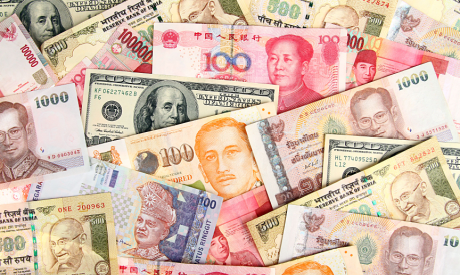Ahead Today
G3: US mortgage applications, eurozone CPI
Asia: Singapore COE auction
Market Highlights
Israel has vowed to retaliate against Iran’s drones and missile attacks. It’s now a race for the international community to urge for Israeli’s restraint to avert a full-blown war in the Middle East region, which would have negative implications for global growth.
Meanwhile, Fed Chair Powell has signaled a delay in rate cuts as US inflation stays persistent. Fed Vice Chair Jefferson also said that US rates could stay high if inflation is persistent, adding to the chorus of other Fed speakers urging for patience on rate cuts. San Francisco Fed President Daly said there is no urgency for rate cuts, and that the current monetary policy stance is appropriate. Also, New York Fed President Williams said that the Fed’s policy is in a good place, pointing to continued resilience in consumer spending and the broader economy.
The broad US dollar index will look to test its October 2023 peak of 107, while EUR/USD continues to weaken on a more dovish ECB relative to the US Fed and risk-off sentiment driven by escalating geopolitical tensions in the Middle East. Markets are now looking for just two US rate cuts this year versus 6 at the start of the year.

Regional FX
Asian FX is bearing the brunt from further strength in the US dollar. USD/KRW hit the 1400 level for the first time since 2022, amid escalating geopolitical tensons and ongoing weakness in the Chinese yuan and Japanese yen. USD/IDR also broke the 16,000 level, with the BI intervening in the spot and DNDF markets to defend the value of the rupiah. The risk of another BI rate hike has increased.
Meanwhile, China’s Q1 GDP grew 5.3%yoy from 5.2% in Q4, beating Bloomberg consensus for 4.8% growth. Sequentially, China’s GDP rose 1.6%qoq, from 1% in Q4. However, activity data for March was mixed. Retail sales slowed to 4.7%yoy YTD in March, from 5.5%yoy YTD in February. And industrial production slowed to 6.1%yoy YTD in March from 7%yoy YTD in February. But urban fixed asset investment growth picked up to 4.5%yoy YTD in March, from 4.2%yoy YTD in February. Notably, China’s real estate investment worsened in March, down 9.5%yoy YTD, versus -9%yoy YTD in February.


